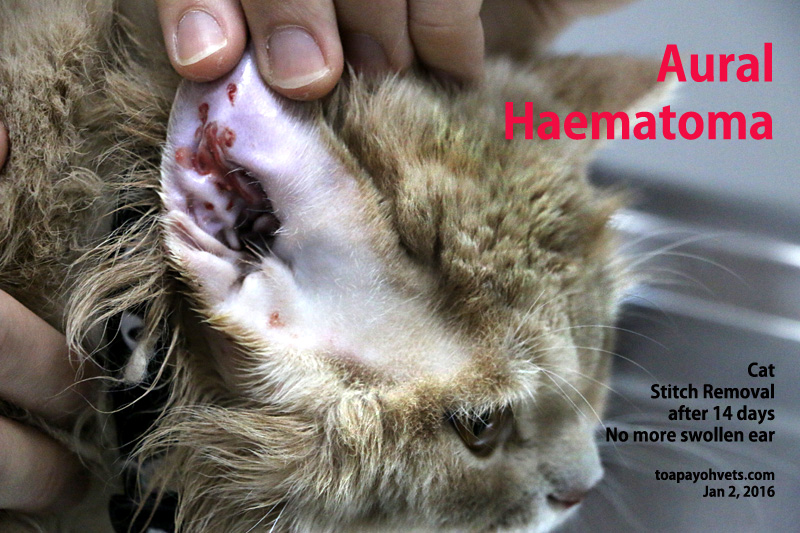

When a hematoma is present, the pinna will appear very thick and spongy. Unfortunately, it is not always possible to identify a cause, or it is difficult to manage the underlying cause (eg allergies). An aural hematoma is a collection of blood, either fresh or clotted, within the pinna (ear flap). If an ear infection is identified, the ear canal will be thoroughly cleaned during anaesthesia and appropriate medical ointments or medications will be dispensed. If a foreign body is found, it is removed. It is essential that the cause of the problem be identified and treated if possible.
#Aural haematoms skin
The second major aspect of treatment is to work out why the haematoma formed in the first place. An aural hematoma (ear hematoma) is a collection of blood between the skin and the cartilage of an animal’s ear. The specific method used will depend on the size, age and position of the haematoma. Reattachment of the ear cartilage is encouraged with the use of multiple sutures placed through the ear flap (with or without the use of a support to maintain the normal architecture of the ear) and these sutures are left in place for 3 weeks. These holes are left open to allow continued drainage of fluid whilst waiting for the ear flap to heal. The blood is drained and the ear flushed to remove any remaining blood clots. This is achieved under general anaesthesia where either a single incision or multiple small biopsy holes are made on the inner surface of the ear. The first aim of treatment is to drain the haematoma to relieve the pressure and pain associated with the build up of fluid within the ear flap. Aural haematoma is commonly stated as a frequent diagnosis in veterinary general practice 1, 2, 3 but there is limited population-based information on the precise frequency of aural. Violent shaking causes the vessels to break as the skin slides across the cartilage.

Blood vessels go from side-to side by passing through the cartilage. The cartilage gives the ear flap its shape. The ear flap is composed of a layer of skin on each side of a layer of cartilage. An understanding of the ear's anatomy makes the sequence of events more logical. Excessive shaking causes blood vessels to break, resulting in bleeding. When something irritates the ear canal, a dog is likely to respond by scratching or shaking the head. Aural haematomas usually occur as a result of local irritation to some part of the ear.


 0 kommentar(er)
0 kommentar(er)
